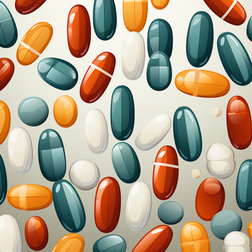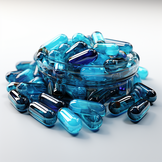Treatment options for erectile dysfunction in individuals with diabetes.
- Understanding Erectile Dysfunction and its Prevalence in Individuals with Diabetes
- Oral Medications for ED Treatment in Diabetic Individuals
- Vacuum Erection Devices and their Application
- Lifestyle Choices and their Impact on ED in Individuals with Diabetes
- Venous Constriction Devices for ED Treatment
- Prostaglandins and their Role in ED Treatment
- Surgical Options for ED in Diabetic Individuals
- Intracavernous Injection Therapy as a Treatment Option
- The Role of High Blood Sugar and its Impact on Nerves and Blood Vessels
- The Importance of Consulting with Healthcare Providers or Diabetes Educators before Starting or Stopping ED Treatments
- Prevention Strategies for ED in Diabetic Individuals
- Answering Common Questions

Understanding Erectile Dysfunction and its Prevalence in Individuals with Diabetes
Erectile dysfunction (ED), a common and distressing complication of diabetes, is defined as the inability to achieve or maintain an erection adequate for satisfactory sexual activity. It affects both physical and psychological health and has significant impacts on the quality of life. ED is more prevalent in individuals with diabetes due to the complex interplay of neurologic, vascular, and psychological factors. High blood sugar levels can cause damage to nerves and blood vessels, which play a crucial role in achieving an erection.
Oral Medications for ED Treatment in Diabetic Individuals
Oral medications are often the first line of treatment for ED in individuals with diabetes. These medications, known as phosphodiesterase type 5 (PDE5) inhibitors, help relax the muscles in the penis, allowing increased blood flow during sexual stimulation.
Avanafil (Stendra), Sildenafil (Revatio, Viagra), Tadalafil (Adcirca, Cialis), and Vardenafil (Levitra, Staxyn) are examples of PDE5 inhibitors.
These medications vary in dosing, onset, and duration of action, and side effects, therefore the choice should be individualized according to patient's needs and response.
Vacuum Erection Devices and their Application
For individuals who cannot take oral medications or do not respond to them, vacuum erection devices are a viable alternative. They work by creating a vacuum around the penis, encouraging blood flow and resulting in an erection. A band is then placed around the base of the penis to maintain the erection.
Lifestyle Choices and their Impact on ED in Individuals with Diabetes
Managing lifestyle factors can significantly influence the course of ED in individuals with diabetes. Smoking cessation, weight loss, and increased physical activity are among the most effective strategies.
Smoking has been linked to heart disease and vascular problems, both of which can lead to ED. Hence, smoking cessation can be a significant step in managing ED.
Obesity is a common comorbidity in individuals with diabetes and can exacerbate the occurrence of ED. Therefore, weight loss through a balanced diet and regular exercise can improve erectile function.
Regular physical activity can help improve blood flow, regulate blood sugar levels, and improve overall health, which can mitigate the effects of ED.
Venous Constriction Devices for ED Treatment
Venous constriction devices, or cock rings, are often used in combination with vacuum erection devices to maintain an erection. They work by preventing blood from flowing back out of the penis.
Prostaglandins and their Role in ED Treatment
Prostaglandins are hormones that are involved in widening blood vessels. For individuals who do not respond to oral medications, prostaglandin E1 can be administered via intracavernous injection therapy or as a urethral suppository to stimulate blood flow and produce an erection.
Surgical Options for ED in Diabetic Individuals
If conservative treatment options are ineffective, surgical options like penile implants may be considered. Two main types of penile implants include inflatable devices and semi-rigid rods, both of which have their own benefits and drawbacks.
Intracavernous Injection Therapy as a Treatment Option
Intracavernous injection therapy involves the injection of medication directly into the base of the penis. This therapy is often effective for individuals who do not respond to oral medications. The most commonly used medications include prostaglandin E1, papaverine, and phentolamine.
The Role of High Blood Sugar and its Impact on Nerves and Blood Vessels
High blood sugar levels over time can damage nerves and blood vessels, leading to complications like ED. Uncontrolled diabetes can also reduce the body's production of nitric oxide, a molecule that helps to relax the muscles in the penis and facilitate blood flow, making an erection possible.
The Importance of Consulting with Healthcare Providers or Diabetes Educators before Starting or Stopping ED Treatments
It's crucial for individuals with diabetes and ED to consult with healthcare providers or diabetes educators before starting or stopping any treatments. Each treatment option has its own set of risks and benefits, and these need to be discussed in the context of the individual's overall health and specific diabetes management plan.
Prevention Strategies for ED in Diabetic Individuals
In addition to the treatment options discussed above, there are also several preventive strategies that individuals with diabetes can adopt. Maintaining blood sugar levels within the target range, regular physical activity, healthy diet, maintaining a healthy weight, regular check-ups, and screening for other diabetes complications are key to preventing ED.
ED from diabetes can be reversed in many cases, depending on the individual's overall health, the severity of their ED, and their ability to control their blood sugar levels. In many cases, making certain lifestyle changes, such as losing weight and increasing physical activity, can help improve ED symptoms.
Answering Common Questions
Can a diabetic man get a hard on? Yes, with appropriate treatment and management, a diabetic man can achieve and maintain an erection sufficient for sexual activity.
What is the number one treatment for erectile dysfunction? There's no single "number one" treatment for ED as the most effective treatment depends on the individual's overall health, the severity of their ED, and their personal preference. However, oral medications like sildenafil (Viagra) and tadalafil (Cialis) are often the first line of treatment.
In conclusion, ED is a common complication of diabetes, but there are many effective treatment options available, ranging from oral medications to lifestyle modifications and surgical interventions. It's important for individuals with diabetes and ED to work closely with their healthcare provider or diabetes educator to choose the best treatment option for their individual circumstances.



